Humerus Bone
Table of Contents
Introduction
The humerus bone, also known as the upper arm bone, is one of the long bones of the upper limb in humans. It connects the shoulder blade to the elbow and is responsible for the movement of the arm. The humerus bone is an essential part of the human skeletal system, and any damage or injury to this bone can cause severe impairment of the arm’s function.
Structure of the Humerus Bone
It is classified as a long bone due to its cylindrical shape and elongated structure. The humerus bone is divided into three main parts: the proximal end, the shaft, and the distal end.
Proximal End:
The proximal end of the humerus bone is the uppermost part of the bone, and it is located close to the shoulder blade. It consists of the rounded ball-shaped structure called the head, which is covered with cartilage and articulates with the scapula bone to form the shoulder joint. The head of the humerus bone is connected to the shaft by a narrower part called the neck.
On the proximal end of the humerus bone, there are two bony projections called the greater and lesser tubercles. These tubercles serve as attachment points for the muscles that move the arm and help stabilize the shoulder joint.
Shaft:
The shaft is the long, cylindrical part of the humerus bone located between the proximal and distal ends. It has a triangular cross-section and contains the bone marrow, which produces red and white blood cells. The shaft of the humerus bone has several ridges, bumps, and depressions that serve as attachment points for muscles, tendons, and ligaments. These attachments allow the humerus bone to perform a wide range of arm movements.
Distal End:
The distal end of the humerus bone is the lowermost part, located close to the elbow joint. It has two bony protrusions called the medial and lateral epicondyles, which serve as attachment points for the muscles that move the forearm. The distal end of the humerus bone also has two fossae, the olecranon fossa, and the coronoid fossa. The olecranon fossa accommodates the olecranon process of the ulna bone during the extension of the elbow, while the coronoid fossa accommodates the coronoid process of the ulna bone during flexion of the elbow.
Soft tissue attachments of the humerus bone
The humerus bone has various soft tissue attachments, including muscles, tendons, and ligaments. These soft tissues play a crucial role in moving the arm and shoulder joints. Some of the major soft tissue attachments of the humerus bone include:
Rotator cuff muscles: The rotator cuff muscles attach to the greater and lesser tubercles on the proximal end of the humerus bone. These muscles include the supraspinatus, infraspinatus, teres minor, and subscapularis, which help to stabilize and rotate the shoulder joint.
Biceps brachii muscle: The biceps brachii muscle attaches to the supraglenoid tubercle of the scapula and the radial tuberosity of the radius bone, passing over the humerus bone. When this muscle acts as a flexion of the elbow joint and supinates the forearm.
Triceps brachii muscle: The triceps brachii muscle attaches to the olecranon process on the proximal end of the ulna bone, passing over the posterior aspect of the humerus bone. This muscle helps to extend the elbow joint.
Deltoid muscle: The deltoid muscle attaches to the acromion process of the scapula and the deltoid tuberosity on the lateral aspect of the humerus bone. This muscle helps to abduct the arm at the shoulder joint.
Brachialis muscle: The brachialis muscle attaches to the anterior aspect of the humerus bone, near the elbow joint. This muscle act as a flexion of the elbow joint.
Ligaments: The humerus bone also has various ligaments that help to stabilize the shoulder and elbow joints. These include the glenohumeral ligaments, which attach the humerus bone to the scapula bone at the shoulder joint, and the ulnar collateral ligament, which attaches the humerus bone to the ulna bone at the elbow joint.
The function of the Humerus Bone
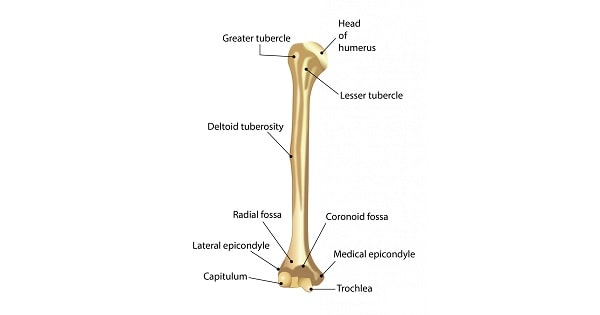
The humerus bone plays a crucial role in the functioning of the upper limb, specifically in the movement of the arm. It serves as an attachment site for several muscles, tendons, and ligaments that work together to move the arm and shoulder joints. Some of the major functions of the humerus bone include
Shoulder joint movement: The humerus bone forms the ball and socket joint with the scapula bone, allowing for a wide range of shoulder movements, such as abduction, adduction, flexion, extension, and rotation.
Elbow joint movement: The distal end of the humerus bone forms the hinge joint with the ulna and radius bones, allowing for elbow movements such as flexion and extension.
Muscle attachment The various bony projections, ridges, and depressions on the humerus bone serve as attachment sites for the muscles that move the arm and shoulder joint. The greater and lesser tubercles on the proximal end serve as attachment sites for rotator cuff muscles, while the medial and lateral epicondyles on the distal end serve as attachment sites for forearm muscles.
Weight-bearing: The humerus bone helps to distribute the weight of the upper limb to the rest of the body, allowing for a stable arm and shoulder joint.
Blood cell production The bone marrow within the humerus bone produces red and white blood cells, which are necessary for immune function and oxygen transport throughout the body.
The humerus bone’s primary function is to enable arm and shoulder movement by serving as an attachment site for muscles, tendons, and ligaments. It also plays a role in weight-bearing and blood cell production, making it an essential bone for overall body function.
Common Injuries to the Humerus Bone
The humerus bone is strong and resilient, but it can be susceptible to injuries due to trauma or overuse. Common injuries to the humerus bone include:
Humerus Fractures
Humerus fractures are a common injury, especially in older adults. Fractures can occur anywhere along the bone, but the most common site is the proximal end, near the shoulder joint. Fractures can be caused by falls, direct impact, or overuse.
Dislocations: Shoulder dislocations are the most common type of dislocation associated with the humerus bone. The humerus bone can be dislocated from the shoulder joint due to a fall or direct impact, causing pain, swelling, and limited mobility.
Rotator cuff injuries: A rotator cuff is a group of muscles and tendons that attach to the humerus bone and help stabilize the shoulder joint. Rotator cuff injuries can be caused by overuse, repetitive motions, or trauma, leading to pain, weakness, and limited mobility.
Bursitis: Bursae are small fluid-filled sacs that cushion the joints and reduce friction between bones and soft tissues. Inflammation of the bursa near the shoulder joint can occur due to overuse, repetitive motions, or direct trauma, causing pain and swelling.
Tendinitis: Tendinitis is inflammation of the tendons that attach to the humerus bone, causing pain, stiffness, and limited mobility. Tendinitis can be caused by overuse or repetitive motions, such as throwing a ball or lifting weights.
Treatment for humerus bone injuries varies depending on the severity of the injury. Conservative treatment options include rest, ice, compression, and elevation (RICE), physical therapy, and pain medication. In severe cases, surgery may be necessary to repair the bone or soft tissue damage.
The humerus bone can be susceptible to injuries such as fractures, dislocations, rotator cuff injuries, bursitis, and tendinitis. Early diagnosis and prompt treatment are essential to prevent further damage and restore proper function to the upper limb.
Conclusion
The humerus bone is a crucial part of the human skeletal system that enables the movement of the arm. It is divided into three parts: the proximal end, the shaft, and the distal end, each with specific structures that contribute to its function. The humerus bone works in conjunction with the muscles of the upper limb to allow for a wide range of arm movements.
Injuries to the humerus bone can cause significant impairment of the arm’s function and require prompt medical attention. Treatment for humerus bone injuries varies depending on the severity of the injury and can range from conservative treatment with rest, ice, and pain medication to surgical intervention.
Overall, the humerus bone’s importance cannot be overstated, as it is essential for the proper functioning of the upper limb and overall body movement.
FAQs
It consists of a proximal end, a shaft, and a distal end, all of which include important anatomical landmarks. The humerus articulates with the scapula proximally at the glenohumeral joint so it experiences the motions of the shoulder.
Muscles located on the Humerus bone are the Biceps, Triceps, Brachialis, Brachioradialis, pectoralis major, latissimus dorsi, deltoid, and rotator cuff muscles attach to the humerus and create the shoulder and elbow movement.
The humerus stands is a long bone located in your upper arm and if your Humerus is fractured it takes 6 weeks to up to 12 weeks to heal properly. However, it may vary depending on age, severity, and treatment. In full injury When Humerus breaks, it needs specialized treatment so that you can manage the problems properly.
Yet, it may take six to twelve months for your symptoms to recover fully – these can involve pain, joint stiffness (reduced range of motion), stiffness, decreased strength, swelling, and loss of muscle strength. These symptoms are reduced as you start treatment and gradually pain subsides nearby 6 to 12 months depending upon the treatment and injury.

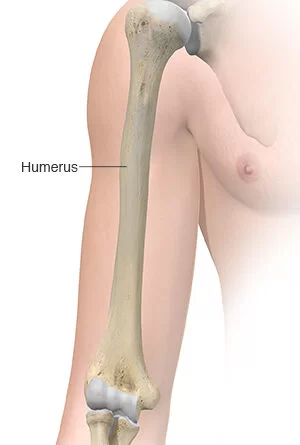
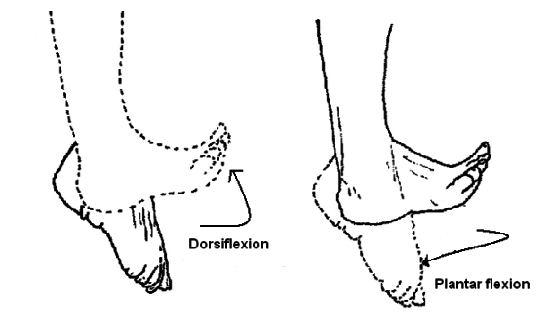
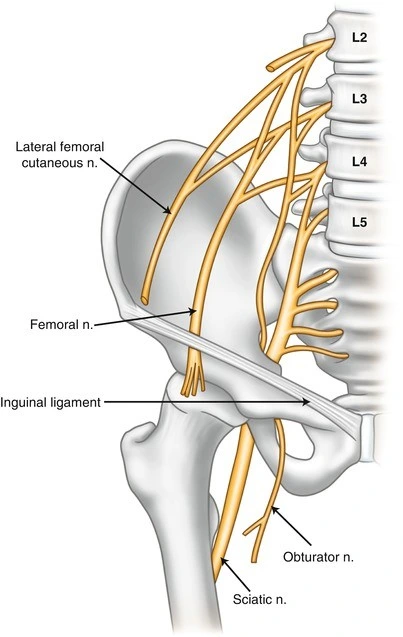
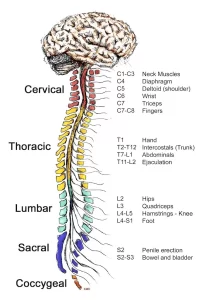
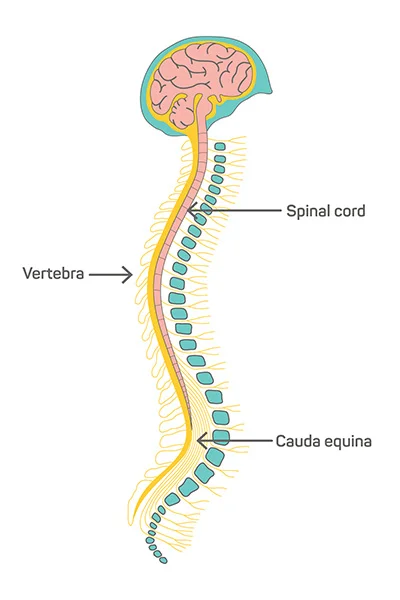
16 Comments